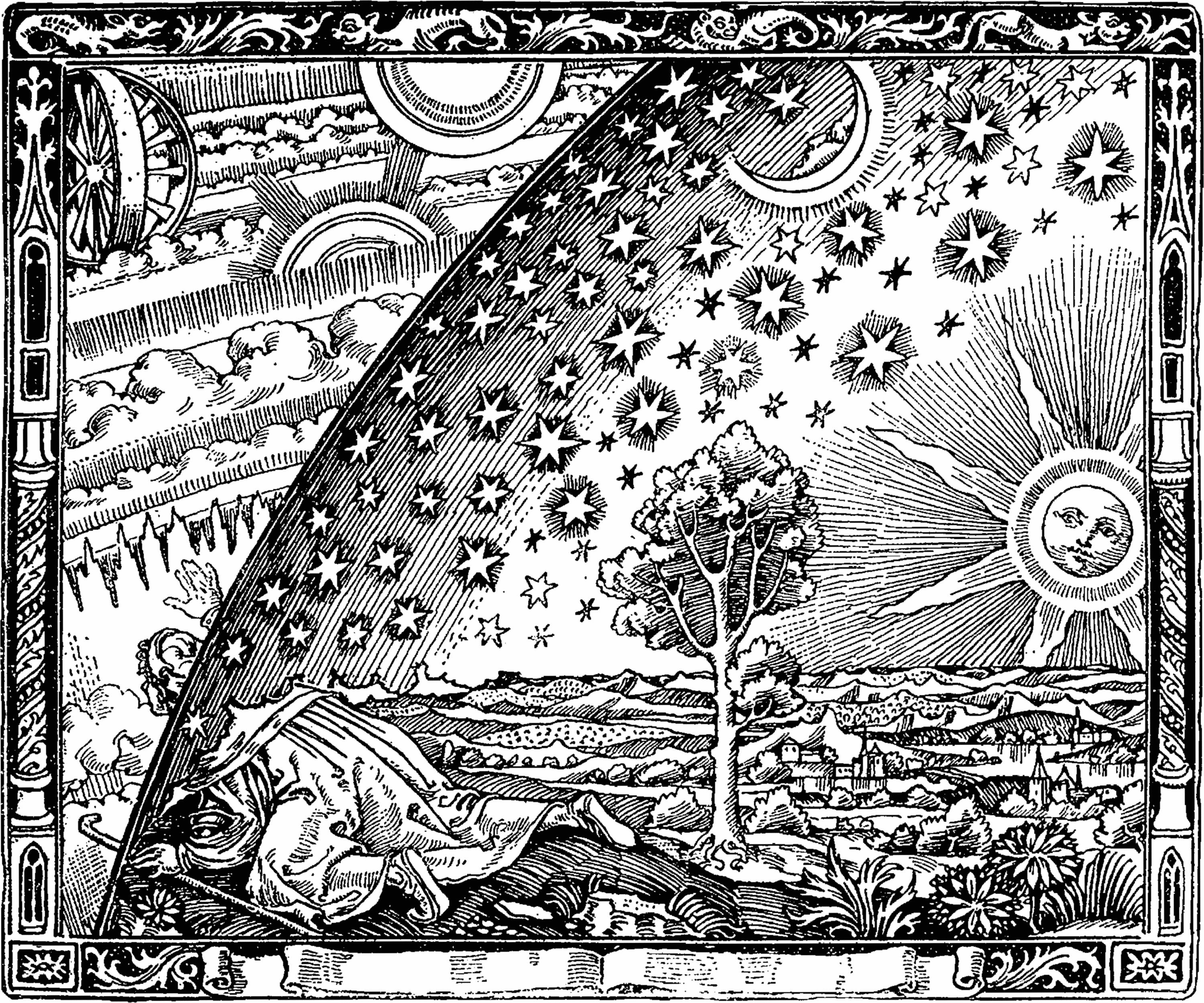Camille Flammarion’s “L’atmosphere:meteorologie popularize” (1881)

A man investigates the point where heaven and earth meet. This fascinating engraving shows him lifting the curtain of the known world to gaze into the mysterious world of the unknown in his quest for knowledge. The intersection point is the ascendant and the artist shows the fabric of the sky, likened to the flap of a tent, allowing access from the inside to the outside.
The engraving reinforces the view of a mechanistic universe with the earth at its centre. The ancient belief, that the universe comprised of concentric crystalline spheres with the earth at its core, is upheld. We see that the solid and spherical vault of the sky is strong enough to support the planets and stars as they rotate overhead, yet soft and yielding at the same time.
The perpendicular nature of the earth upon which our investigator is lying serves to reflect and reinforce the theory of the flat earth. It is the only horizontal component of the engraving showing the seeker at the ends of the earth and gives the woodcut a sense of dynamic motion.
The earth, land of the familiar, is highly illustrated and detailed but the vastness beyond the veil is not so detailed, hinting at our lack of knowledge. However, the engraver of this enigmatical and beautiful masterpiece starts from a familiar point of reference. Unsurprisingly the ‘beyond’ is also arranged spherically and is reminiscent of a clockwork mechanism with all its cogs and gears.
The prying figure is awestruck at the machinery of the cosmos in action, as depicted by a wheel within a wheel. In the heavenly realm the spherical bands with their regular rhythms, rotate around our earthly sub-lunar realm, influencing life on earth via the cycles of day and night, the season and so on. These bands also incorporate the four classical elements of fire, earth, air and water. Being the building blocks of all matter, naturally they are to be found nearest our earthly realm.